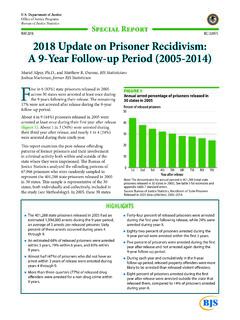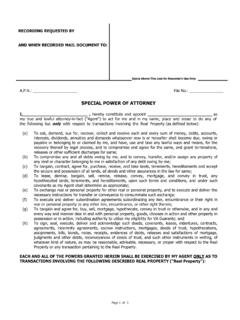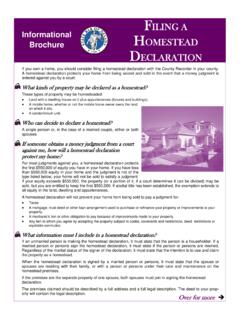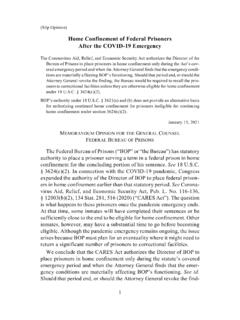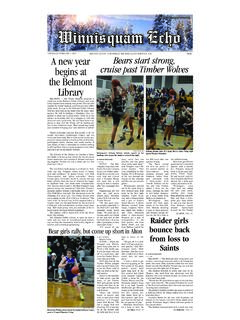Transcription of National Data Collection on Police Use of Force
1 National DataCollection on Police Use of ForceJointly published with the National Institute of Department of JusticeOffice of Justice ProgramsBureau of Justice StatisticsNational DataCollection onPolice Use of ForceJointly published with the National Institute of JusticeTom McEwenInstitute for Law and JusticeAlexandria, VirginiaApril 1996, Department of JusticeOffice of Justice ProgramsBureau of Justice StatisticsJan Chaiken, Institute of JusticeJeremy Travis, document was prepared under contract OJP-94-C-008 with support provided by the National Instituteof Justice (NIJ) and Bureau of Justice Statistics (BJS),Office of Justice Programs, Department of Justice.
2 The points of view or opinions expressed in this document are those of the author and do not necessarily represent the official position or policiesof the Department of author may be contacted at Institute for Law and Justice1018 Duke StreetAlexandria, VA 22314 Phone: 703-684-5300 Fax: 703-739-5533ii National Data Collection on Police Use of ForceThe author would like to thank several people who reviewed drafts of this discussion paper. In additionto staff members at NIJ and BJS, beneficial commentswere provided by Geoff Alpert, Professor, Universityof South Carolina; Edward F.
3 Connors, President, In-stitute for Law and Justice (ILJ); Lorie Fridell, Profes-sor, Florida State University; William A. Geller,Associate Director, Police Executive Research Forum;Joel Garner, Director of Research, Joint Centers forJustice Studies, Inc.; Robert Langworthy, Professor,University of Cincinnati; Neal Miller, Principal Asso-ciate, ILJ. Joan Peterschmidt on the ILJ staff pro-vided excellent support in the preparation of the text was improved considerably by the editing of Peter Ohlhausen of Alexandria, Boston and Tom Hester of BJS proofread the final report, with Ms.
4 Boston producing the cameracopy under the supervision of Marilyn Data Collection on Police Use of Force iiiContentsForeword viIntroduction 1 Police Use of Force Workshop 5 Federal responses 10 National data Collection efforts 10 Annual summaries 11 Research on Police use of Force 13 Police use of Force : An overview 16 Prior studies of use of Force 16 Data reporting needs and Police liability 24 Consumers of Police use of Force data 27 Recent studies on Police use of Force 31 National survey of Police use of Force 32 State survey of Police use of Force 36 Local survey of Police use of Force 39iv National Data Collection on Police Use of ForceData Collection challenges 42 Definitions of use of Force 43 Incident-level versus aggregate-level data submission 49 Rates of Police
5 Use of Force 52 Misapplications of use of Force data 55 Anonymity of submitting agencies 59 Alternative approaches to data Collection 60 Official records 63 Court records 63 Citizen complaint records 64 Arrest records 66 Use-of- Force reports 68 Injury records 69 Surveys of Police 71 Surveys of citizens 73 National data Collection efforts 75 Victimization study 75 IACP study 78 Conclusions 82 References 83 Public databases 89 Appendix 91 National Data Collection on Police Use of Force vForewordThis report highlights findings from existing researchon Police use of Force .
6 It describes how the Bureau of Justice Statistics and the National Institute of Jus-tice will collect data on Police contacts with membersof the public that result in the use of Force by law enforcement officers. The report responds to Section210402 of the Violent Crime Control and Law En-forcement Act of 1994, which requires the AttorneyGeneral to acquire data about the use of excessiveforce by law enforcement officers and to publish anannual summary of the data acquired.. Systematically collecting information on use of forcefrom the Nation's more than 17,000 law enforcementagencies is difficult given the lack of standard defini-tions, the variety of incident recording practices, andthe sensitivity of the issue.
7 However, BJS and NIJ have embarked on several projects to improve ourknowledge of Police use of Force : BJS is field testing a National household survey toassess how often Police -public contacts result in use of Force . The survey will ask approximately 100,000people each year to describe any recent contact theymay have had with the Police and will be the firstcomprehensive Collection of information about allkinds of experiences in contacting the Police , positiveas well as negative. Some fraction of these contactsvi National Data Collection on Police Use of Forcewill involve Police use of Force , permitting furtheranalysis to ascertain the incidence and characteristicsof Police use of excessive Force .
8 BJS and NIJ are sponsoring the National Police Useof Force Database, currently administered by the In-ternational Association of Chiefs of Police . This pilotproject will use a standard form to gather informationdirectly from law enforcement agencies on incidentsinvolving use of Force . NIJ is funding several site-specific research projectson use of Force . One project will survey arresting officers in four cities about the kind of Force used andthe circumstances of Bureau of Justice Statistics, the National Instituteof Justice, and the Institute for Law and Justice coop-erated to bring you this report.
9 We hope you will findit valuable in understanding what is known about po-lice use of Force , and the measures that can be taken to improve that M. Chaiken Jeremy TravisDirectorDirectorBureau of Justice StatisticsNational Institute of JusticeNational Data Collection on Police Use of Force viiNational Data Collection on Police Use of Force IntroductionThe feature distinguishing Police from all other groupsin society is their authority to apply coercive forcewhen circumstances call for it. Police may be calledon to use Force when making an arrest, breaking up analtercation, dispersing an unruly crowd, or performinga myriad of other official activities during their dailyroutines.
10 The Force may range from pushing a personto get his attention to using a firearm. Between thoseextremes are several other types of Force , includingfirm grips on an arm, use of debilitating chemicalagents, and blows with a baton. Whatever method is used, Police are expected to apply only the forcenecessary to resolve a given Police go beyond reasonable Force to use exces-sive Force during an arrest or in precipitous response,as during the decades of protest demonstrations National Data Collection on Police Use of Force 1involving labor, civil rights, or other controversial is-sues, citizens become victims of Police , and the pub-lic s confidence in a Police Force can abuses of Force rightfully receive extensive at-tention from the public.







